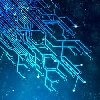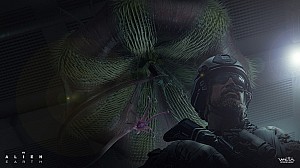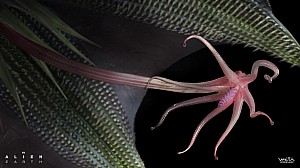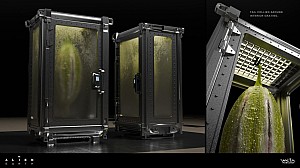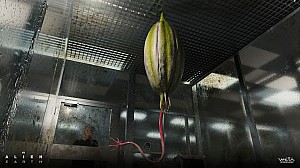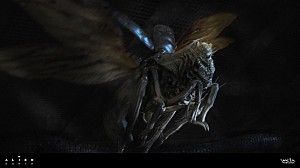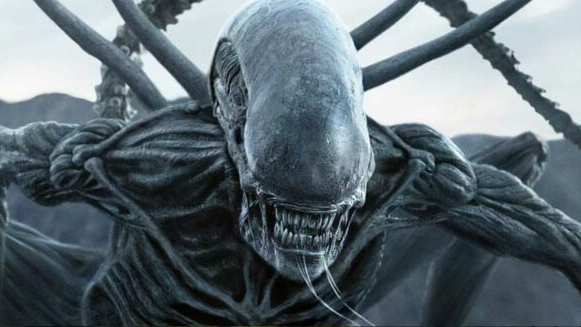Aquatic Reptile Evolutions: From Land to Sea
Alien Forum Topic
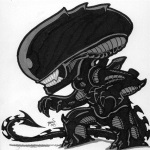
Xenotaris
MemberPraetorianOct 24, 20167274 Views9 Replies
You've seen the Evolution of Dinosaurs and then the Pterosaurs. Get ready as I turn back the clock and reveal the evolution of the Marine Reptiles.
Lets start at the beginning of Reptiles.
When the first amniotes evolved they diverged in to two animal groups the Synapsids (Mammal-like Reptiles to Modern Mammals) and the Sauropsids (Traditional Reptiles and Birds).
Marine reptiles do not evolve from any synapsids, as they would eventually lead to the evolution of marine mammals.
All Marine Reptiles are members of the clade Sauropsida "Reptile Face", the first of the Marine Reptiles firsts evolves in the lower clade Parareptilia which is a group of early reptiles that were traditionally placed as anapsids before the discovery that turtles where actually diapsids. Parareptilia means "At the side of Reptiles" but they evolved along side their sister clade Eureptilia "True Reptiles" but anyways the first Marine reptile evolved in the parareptilia's lower clade mesosauria "middle reptile" which only lived during the early to middle permian before they mysteriously died out, possibly due to late permian climate change.
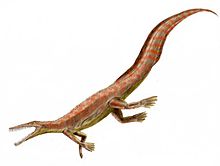
The three known Mesosaur genera are Brazilosaurus, Mesosaurus, and Stereosternum.
Now on to Eureptilia aquatic reptiles, lets jump forward to the clade Diapsids "Two arches". One of the first diapsids to become aquatic are the Tangasaurids

The other was the distantly related Claudiosaurids, who were closer related to the clade Sauria (Crown/Modern Reptiles)

Now we reach the Triassic period, Sauria is broken into two clades: lepidosauromorphs and archosauromorphs. Under the clade archosauromorpha, two lineages diverge from each other: Pantestudines (Stem-Turtles and Modern Turtles) and basal Archosauromorphs.
The most well known of the extinct Pantestudines are the Sauropterygia who is also their basal member. Sauropterygia aside from its basal member Atopodentatus can be divided in two clades: Eosauropterygia and Placodontiformes
Let me first start with the turtle-like Placodontiformes, since their reign is relatively short (Middle to Late Triassic). Its basal member is Palatodonta which is outside of the clade Placodontia. Within Placodontia we have basal Paraplacodus along side advanced placodontia Placodus and its relative the Cyamodontoidea which includes Cyamodus and Psephoderma.

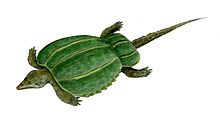
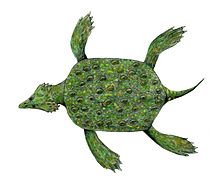
Eosauropterygia is possibly the better known to popular culture, It could be divided in to the following clades: Pistosauroidea, Pachypleurosauroids, Nothosauroids.
Nothosauroids were divided in to the Nothosaurids and the Simosaurids (To know more click on the links)
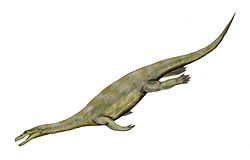
Pachypleurosauroids is populated by several basal genera: Diandongosaurus, Hanosaurus, Majiashanosaurus. Qianxisaurus, Wumengosaurus as well as two advanced clade genera:
Keichousauridae: Dianopachysaurus and Keichousaurus.
Pachypleurosauridae: Anarosaurus, Dactylosaurus, Neusticosaurus, Odoiporosaurus, and Serpianosaurus.

Pistosauroidea houses the Corosaurus, Cymatosaurus. the plesiosaur-like Pistosaurus, and the Plesiosaurs
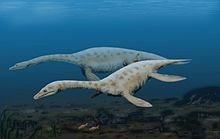
Plesiosaurs are further divided in to Plesiosauroidea (Long Neck Plesiosaurs) and Pliosauroidea (Short Neck Plesiosaurs)


The Plesiosauroids can be broken down like this: the basal Eoplesiosaurus, Plesiosaurus, Plesiopterys, and Eretmosaurus; to the advanced mid-jurassic plesiosauroids the Microcleididae: basal microcelidians Hydrorion, Lusonectes, Westphaliasaurus, advanced microcelidians Seeleyosaurus and Microcleidus.
Cryptoclidia evolves from its common ancestor with Plesiopterys and then diverges into two clades: Cryptoclididae and Xenopsaria
Cryptoclididae: Basal members were Djupedalia, Opallionectes, Pantosaurus, and Spitrasaurus, more advanced groups such as Cryptoclidinae and Muraenosaurinae.
Cryptoclidinae: Abyssosaurus, Colymbosaurus, Cryptoclidus, Kimmerosaurus, Tatenectes, and Tricleidus.
Muraenosaurinae: Muraenosaurus, Picrocleidus, and Vinialesaurus
Xenopsaria was further derived into Leptocleidia and Elasmosauridae (Click Link to know more)
-------------------------------------------------
Now on to Pliosauroids
Pliosaurs can be divided into two families: Rhomaleosauridae and Pliosauridae
Rhomaleosauridae include genera: Stratesaurus, Macroplata, Avalonnectes, Eurycleidus, Meyerasaurus, Maresaurus, Atychodracon, Archaeonectrus, and Rhomaleosaurus.
Pliosauridae include genera: basal Thalassiodracon, Hauffiosaurus, Attenborosaurus, Marmornectes, with more advanced clade Thalassophonea: Peloneustes, Simolestes, Liopleurodon, Pliosaurus, Gallardosaurus, and specialized infraclade Brachaucheninae: Brachauchenius, Kronosaurus, and Megacephalosaurus
Replies to Aquatic Reptile Evolutions: From Land to Sea
Hey Guest, want to add your say?
Are you an avid Alien fan looking for a dedicated online community of likeminded fans? Look no further! Create your own profile today and take part in our forums and gain XP points for all the content you post!

